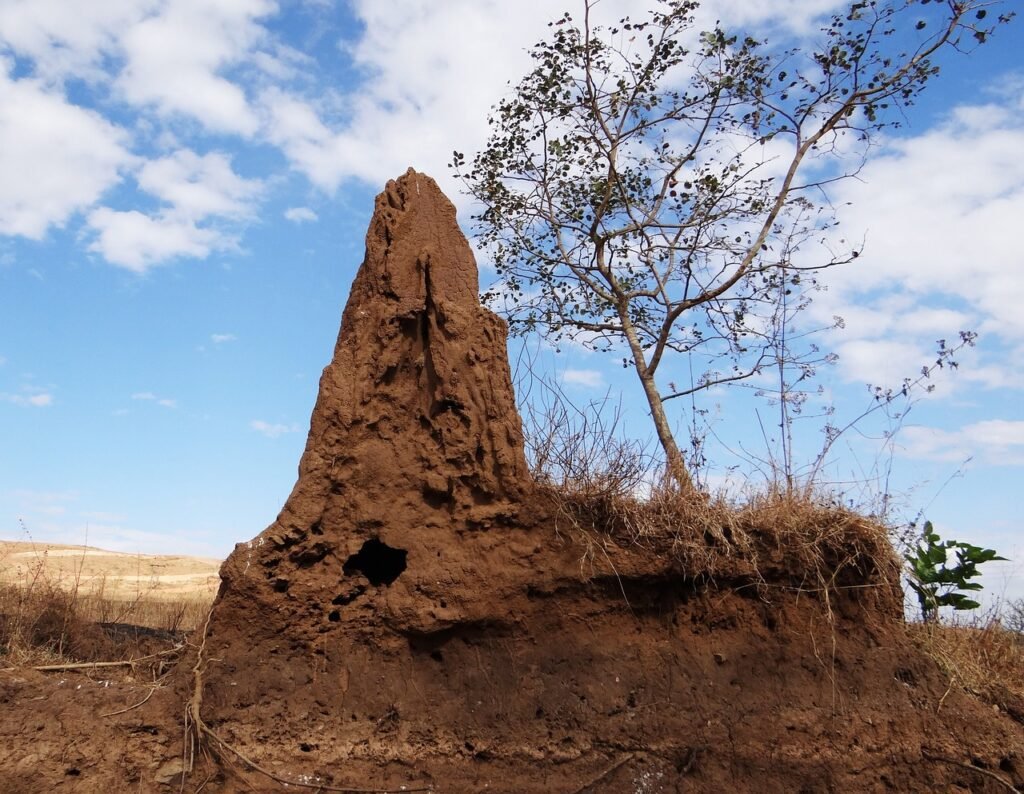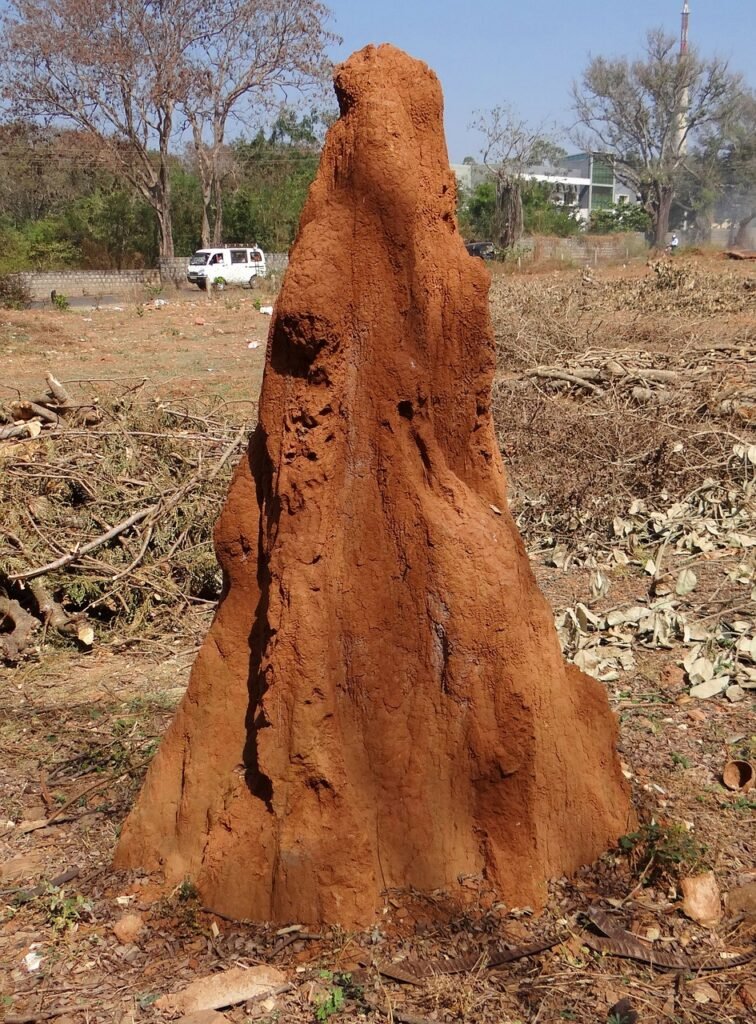If you are a pet owner, protecting your furry companions from any potential harm is likely a top priority. When it comes to termite infestations, the safety of your pets should not be overlooked. This article explores the significance of opting for pet safe termite treatment methods and highlights the potential dangers that conventional treatments may pose to your beloved animals. By choosing pet safe termite treatment, you can ensure the well-being of both your pets and your home.


Understanding Termites and the Danger they Pose
Termites are small insects that can cause significant damage to homes and buildings. It is essential to be able to identify termites to prevent and mitigate the damage they can cause. Termites are similar in appearance to ants, but they have straight, bead-like antennae, a thick waist, and straight wings of equal length. They range in color from pale white to dark brown, depending on their species.
Identification of Termites
To identify termites, it is crucial to look for certain signs. One common indication of termite activity is the presence of mud tubes, which termites build to travel between their colonies and food sources. These mud tubes are usually found along the foundation of buildings or other wooden structures. Additionally, discarded termite wings near window sills or light sources may signify the presence of a termite swarm. It is also important to be aware of the distinctive shelter tubes termites construct to protect themselves when moving across exposed surfaces.
The Damage Caused by Termites
Termites can cause substantial damage to wooden structures, including walls, floors, ceilings, and furniture. They feed on cellulose, which is the main component of wood, and can weaken the structural integrity of a building over time. This damage is often not immediately visible, as termites tend to create tunnels and feed from the inside out, leaving only a thin layer of paint or veneer to conceal their activities. If left untreated, a termite infestation can lead to costly repairs and compromise the safety of structures.
The Termite Life Cycle
Termites have a complex life cycle that consists of three distinct castes: workers, soldiers, and reproductives. The worker termites are responsible for building and maintaining the nest, as well as foraging for food. Soldiers, on the other hand, are tasked with defending the colony from potential threats. Reproductives, including the king and queen, are responsible for establishing new colonies. Understanding the termite life cycle is important for effective treatment and prevention strategies.
The Necessity of Termite Treatment
Termite treatment is crucial to prevent damage to your property, protect your health, and mitigate the economic and financial impact of termite infestations. Without prompt treatment, termites can cause extensive damage to your home or business, compromising the value of your property and leading to expensive repairs. Additionally, termites can pose health risks and aggravate respiratory conditions in individuals with allergies or asthma. Therefore, it is essential to take proactive measures to eliminate termites and protect your property.
Preventing Damage to Your Property
One of the primary reasons for termite treatment is to prevent damage to your property. Termites can silently destroy the wooden components of your home, such as support beams, floorboards, and walls, compromising their structural integrity. By implementing termite treatment measures, you can effectively eliminate termites and protect your property from further damage. Regular inspections and preventative treatments are essential to safeguard your investment.
Health Risks Posed by Termites
Aside from the potential damage to property, termites can also pose health risks to the occupants of infested buildings. Termites produce a significant amount of fecal matter and saliva as they feed on wood, which can contaminate the air quality within a home. This can lead to respiratory issues and aggravate allergies and asthma. Moreover, termite infestations can attract other pests, such as cockroaches and rodents, which can carry diseases. By implementing termite treatment, you can minimize these health risks and create a safer living environment.
Economic and Financial Impact of Termite Infestation
The economic and financial impact of a termite infestation can be devastating. A significant termite infestation can significantly decrease the value of a property, making it difficult to sell or rent. Furthermore, the cost of repairing the damage caused by termites can be substantial, especially if the infestation has gone unnoticed for an extended period. By investing in termite treatment, you can protect your property’s value and potentially avoid expensive repairs in the future.
Traditional Termite Treatment Methods
Historically, termite treatment has primarily relied on chemical insecticides to eliminate termites. These chemical treatments involve the application of liquid termiticides, which form a barrier around the structure and kill termites when they come into contact with it. Another traditional method is the use of physical barriers and traps, which can help prevent termites from entering a building. Additionally, biological control methods, such as introducing predators or parasitic nematodes, have been used as a natural means of termite control.
Use of Chemical Insecticides
Chemical insecticides have long been the go-to method for termite treatment. These products are designed to be highly toxic to termites, eliminating colonies and preventing further infestations. However, while effective, chemical insecticides can pose hazards to human health and the environment. Exposure to these chemicals can lead to skin irritation, respiratory problems, and other health issues. Additionally, the use of chemical insecticides can have adverse effects on non-target organisms, including pets.
Physical Barriers and Traps
Physical barriers and traps are another traditional approach to termite treatment. These methods involve creating a physical barrier, such as a layer of metal or concrete, around the structure to prevent termites from gaining access. Traps can also be used to capture and kill termites. While physical barriers and traps can be effective, they require proper installation and maintenance to ensure their continued efficacy. Additionally, these methods may not be suitable for all types of structures or infestations.


Biological Control Methods
Biological control methods utilize natural predators or parasites to control termite populations. By introducing these natural enemies of termites, such as certain wasp species or beneficial nematodes, it is possible to reduce termite colonies without the use of chemical insecticides. Biological control methods are often seen as a more environmentally friendly approach to termite treatment. However, their effectiveness can vary depending on the specific circumstances and the species of termites involved.
Hazards of Traditional Termite Treatment for Pets
While traditional termite treatment methods can be effective, they often pose hazards to pets. Chemical exposure risks are one of the main concerns when using chemical insecticides. Pets can come into contact with treated areas, leading to skin irritations and other health issues. Ingestion and inhalation dangers are also present, as pets may accidentally ingest or inhale toxic chemicals that are present in the treated areas. Moreover, secondary poisoning risks can occur if pets consume prey or insects that have been exposed to chemical insecticides.
Chemical Exposure Risks
Chemical insecticides used in traditional termite treatment can pose a significant chemical exposure risk to pets. Pets may come into direct contact with treated areas, such as floors or baseboards, and the chemicals can be absorbed through their skin or paws. This can lead to skin irritations, allergic reactions, or more severe health issues. It is crucial to take precautions and consider pet-safe alternatives to protect the well-being of your furry companions.
Ingestion and Inhalation Dangers
Pets can accidentally ingest or inhale toxic chemicals used in traditional termite treatment. Dogs, for example, may chew on treated wood or lick their paws after walking on treated surfaces. Cats may also groom themselves and accidentally ingest chemical residues. Ingestion or inhalation of these toxic substances can lead to gastrointestinal distress, respiratory issues, and even poisoning in severe cases. It is essential to prioritize the safety of your pets and explore pet-safe termite treatment options.
Secondary Poisoning Risks
Secondary poisoning risks arise when pets consume prey or insects that have been exposed to chemical insecticides. For example, if a cat catches and consumes a mouse that has come into contact with a treated area, it could result in the cat being poisoned. This poses a threat to not only the targeted pests but also the pets themselves. Opting for pet-safe termite treatment can help mitigate the risk of secondary poisoning and ensure the well-being of your beloved pets.
Introduction to Pet-Safe Termite Treatment
Pet-safe termite treatment refers to the use of methods and products that do not pose hazards to pets during and after treatment. With the growing concern for pet health and safety, there has been an emergence and adoption of safe methods that effectively eliminate termites without endangering pets. Pet-safe termite treatment prioritizes the well-being of pets while still providing efficient and long-term protection against termite infestations.
Defining Pet-Safe Termite Treatment
Pet-safe termite treatment encompasses a range of methods and products that are specifically formulated to eliminate termites without posing any risks to pets. These treatments prioritize the safety and health of pets by using natural or low-toxicity substances that are not harmful when used as directed. The goal is to effectively control and prevent termite infestations while minimizing the potential risks to pets and their well-being.
Emergence and Adoption of Safe Methods
The emergence and adoption of pet-safe termite treatment methods are attributed to the growing awareness of the potential hazards posed by traditional chemical treatments. Pet owners are increasingly seeking alternative options that provide effective termite control without compromising the health and safety of their beloved pets. This demand has led to the development and availability of a range of pet-safe termite treatment products and services in the market.
How Pet-Safe Termite Treatment Works
Pet-safe termite treatment methods often utilize natural or low-toxicity substances that are formulated to specifically target termites while being safe for pets. Natural treatments may include essential oils, plant extracts, or other naturally occurring compounds that repel or kill termites. Low-toxicity chemical treatments use innovative formulations that are safe for pets but still efficiently eliminate termites. These methods typically involve the application of pet-safe products in targeted areas, creating a protective barrier or baiting system to control and prevent termite infestations.
The Importance of Pet-Safe Termite Treatment
Pet-safe termite treatment offers several key benefits, including ensuring the health and safety of your pets, minimizing environmental impact, and providing long-term protection against termites. By opting for pet-safe methods, you can eliminate termites without jeopardizing the well-being of your furry companions. Additionally, pet-safe treatments are often more environmentally friendly, reducing the potential harm to ecosystems and non-target organisms. Moreover, pet-safe termite treatments are designed to provide long-lasting efficacy, ensuring ongoing protection against future termite infestations.
Ensuring Pet Health and Safety
The health and safety of your pets should always be a top priority. Pet-safe termite treatments offer peace of mind by eliminating the risks associated with traditional chemical methods. These treatments use substances that are specifically chosen and formulated to be safe for pets, minimizing the potential for health issues or toxic exposure. By investing in pet-safe termite treatment, you can protect not only your home but also the well-being of your beloved pets.


Minimizing Environmental Impact
Pet-safe termite treatment methods place a strong emphasis on minimizing the environmental impact. Traditional chemical insecticides can have adverse effects on ecosystems and non-target organisms. Pet-safe treatments utilize natural or low-toxicity substances that are less harmful to the environment. By choosing pet-safe treatment options, you are actively contributing to the conservation of ecosystems and the protection of wildlife.
Ensuring Efficacy and Long-Term Protection
Pet-safe termite treatments are designed to provide efficient and long-term protection against termites. These treatments use innovative formulations and application techniques to effectively eliminate termites and prevent future infestations. By choosing a reputable and reliable pet-safe termite treatment provider, you can ensure that the treatment is tailored to your specific needs and guarantees ongoing protection for your property.
Types of Pet-Safe Termite Treatments
There are various types of pet-safe termite treatments available, each with its unique characteristics and benefits. Natural and non-toxic treatments utilize plant-based extracts, essential oils, or other natural compounds that repel or kill termites while being safe for pets. Biological control treatments involve the introduction of natural predators or parasites to target termite populations. Low-toxicity chemical treatments use innovative formulations that are designed to be safe for pets. Each type of treatment offers a pet-safe alternative to traditional termite control methods.
Natural and Non-Toxic Treatments
Natural and non-toxic termite treatments rely on plant-based extracts, essential oils, or other natural compounds that are proven to repel or kill termites. These treatments are safe for pets as they utilize ingredients that are non-toxic and pose no harm when used as directed. Natural treatments are often biodegradable and environmentally friendly, minimizing the impact on ecosystems and non-target organisms. They provide an effective alternative for pet owners seeking a pet-safe solution for termite control.
Biological Control Treatments
Biological control treatments use the introduction of natural predators or parasites to control termite populations. Beneficial organisms, such as certain wasp species or parasitic nematodes, are introduced into the termite-infested areas. These organisms prey on termites or infect them with fatal diseases, effectively reducing termite colonies. Biological control treatments are safe for pets as they do not involve the use of toxic substances. They provide a natural and pet-safe option for controlling termite infestations.
Low-Toxicity Chemical Treatments
Low-toxicity chemical treatments utilize innovative formulations that are specifically designed to be safe for pets. These treatments use low-concentration chemicals that effectively eliminate termites without posing significant risks to pets. The formulations are carefully developed and tested to ensure their pet-safe properties. Low-toxicity chemical treatments offer a balance between efficacy and pet safety, providing an alternative to traditional chemical insecticides.
Choosing the Right Pet-Safe Termite Treatment
When choosing a pet-safe termite treatment, several factors should be considered to ensure the best option for your needs. It is essential to consider your pet’s needs and sensitivities, as certain treatment methods may be more suitable for specific pets. Assessing the extent of the infestation is also crucial, as it can determine the appropriate treatment approach. Cost and time effectiveness should also be taken into consideration to make an informed decision that meets both your budget and timeline.
Considering your Pet’s Needs and Sensitivities
Not all pets react the same way to all types of treatments. It is important to consider your pet’s needs and sensitivities when selecting a pet-safe termite treatment. Some pets may have underlying health conditions or allergies that require special attention. Consulting with a veterinarian or a pest control professional who specializes in pet-safe treatments can help determine the most suitable approach to ensure your pet’s safety and well-being.
Assessing the Extent of the Infestation
The extent of the termite infestation is a crucial factor in determining the appropriate pet-safe treatment. Different treatment methods may be more effective depending on the size and severity of the infestation. A thorough inspection by a qualified pest control professional can provide valuable insights into the extent of the infestation and guide you in selecting the most appropriate pet-safe treatment option.
Considering Cost and Time Effectiveness
Cost and time effectiveness are important considerations when choosing a pet-safe termite treatment. It is essential to evaluate the budget available for termite treatment and select a pet-safe option that fits within that range. Additionally, the time required for the treatment to be completed should be taken into account. Some treatment methods may require multiple visits or ongoing maintenance, while others offer a more time-efficient solution. Balancing both factors will help ensure that the chosen pet-safe treatment is practical and suitable for your specific circumstances.
Implementing Pet Safe Termite Treatment
Implementing pet-safe termite treatment involves careful planning, proper application, and ongoing monitoring and follow-up. Following the recommended steps will help ensure the effectiveness and long-term protection provided by the chosen treatment method.
Preparation and Planning
Before implementing pet-safe termite treatment, it is important to prepare the area and plan accordingly. This may involve removing any pet food or water bowls, toys, or bedding from the treatment area. Pets should be temporarily relocated to a safe and designated space during the treatment process. Proper preparation and planning will help minimize disruptions and maximize the safety of both pets and humans.
Application of the Treatment
The application of the pet-safe termite treatment should be conducted by a qualified pest control professional familiar with pet-safe methods. They will apply the chosen treatment according to the specific requirements and instructions. It is crucial to follow all guidelines provided by the pest control professional and manufacturer to ensure the proper application of the treatment. This will help achieve optimal results while prioritizing the safety of pets.
Monitoring and Follow-Up
After the initial application of the pet-safe termite treatment, monitoring and follow-up are essential to evaluate the treatment’s effectiveness and ensure long-term protection. Regular inspections by the pest control professional will help detect any signs of termite activity and address any potential issues promptly. Ongoing monitoring and follow-up are critical for maintaining a termite-free environment and providing continued protection for your property and pets.
Real-Life Examples and Case Studies of Pet Safe Termite Treatment
Real-life examples and case studies can provide valuable insights into the effectiveness and benefits of pet-safe termite treatment. Success stories highlight how pet-safe treatments have effectively eliminated termites and protected homes without posing any harm to pets. Additionally, challenges and lessons learned from various case studies can help refine and improve pet-safe termite treatment methods. These examples and studies lay the foundation for future pest control strategies, ensuring the continued development of safe and effective treatment options.
Your Expert in Animal Control and Extermination. Trust our experience for humane, effective pest management, protecting your property and ensuring peace of mind with Michael S.





